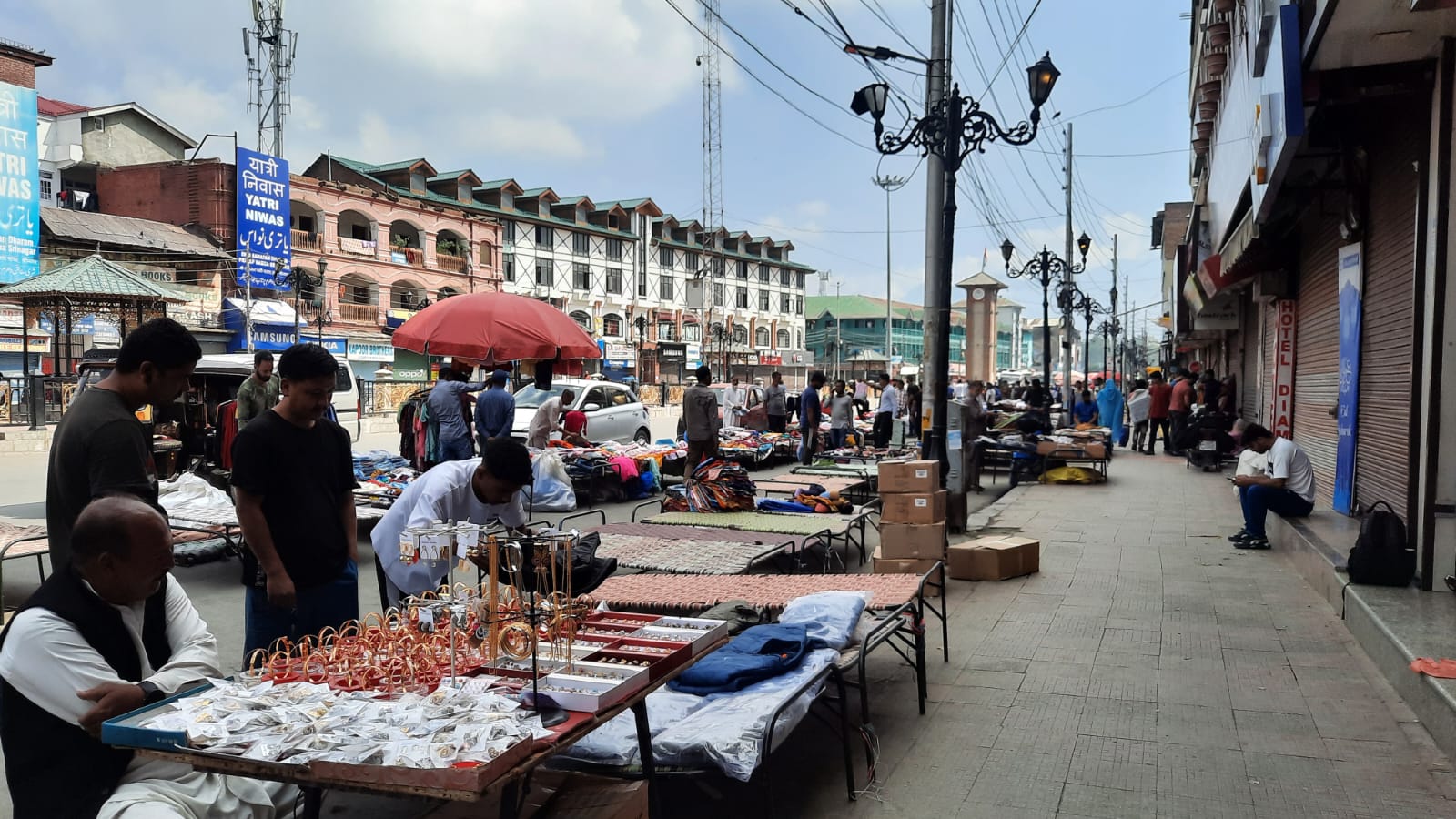The 124th Constitution Amendment Bill 2019 passed in both Houses of the Parliament (in Lok Sabha on 8 January 2019 and in Rajya Sabha on 9 January 2019 as the 103rd Amendment Act 2019) pertaining to reservation for the Economically Weaker Sections (EWS) within the General Category received the assent of the President on 12 January. The Act was notified in the Gazette of India on 14 January 2019. The Bill added new clauses to Articles 15 and 16 of the Constitution, under the “right to equality” section, forming part of Fundamental Rights in the text of the Constitution. The new clause (6) in Article 15 allows the government to implement 10 per cent reservation for EWS in higher educational institutions, including private institutions, both those receiving government aid and those that are not. Minority educational institutions are exempt. Likewise, the new clause (6) in Article 16 provides for the 10 per cent quota to EWS in recruitment to public services. According to constitutional experts, since the Act deals with only fundamental rights and not Centre-State relations, it need not be ratified by the States before the Presidential assent. The quota for EWS will be in addition to the existing quotas for SCs, STs and OBCs, taking the total reserved quota to over and above the present cap of 50 per cent. The Gujarat government immediately introduced economic reservation based on the above Act. The union government has offered the following justifications for economic reservation for EWS:
- The move is expected to put an end to the practice of candidates misrepresenting themselves, including by obtaining fake SC/ST certificates, to get jobs and gain entry into professional courses;
- With the 10 per cent EWS quota in place, the upper castes will no longer hold reservation responsible for national disintegration and perpetuation of casteism; and
- The 50 per cent cap on total reservation is applicable only in the case of backward classes and not non-backward classes.

Given the the most fundamental shift in state policy on social justice and inclusive development after the Mandal reservations, the Act on economic reservation has triggered heated debates on its general purport, legal intricacies, social issues, operational hurdles, and a number of other related implications.
General observations
- Whereas the policy of reservation to backward classes is based on the need for discriminatory protection for them to tide over comprehensive, historical (socio-economic and educational) backwardness, it is only economic backwardness that prompted quota for Savarnas. Hence the quota treats reservation as an anti-poverty intervention.
- The 10 per cent quota is at variance with the very normative basis of the reservation policy: To secure social justice to the historically discriminated and oppressed backward classes who have faced untouchability, social boycott and atrocoties – which requires fixed quota for them and not simply affirmative action in the form of equal opportunity.
- While the reserved quota and its implementation will continue to be indequate for the OBCs, the 10 per cent quota for the hitherto unreserved categories will be fulfilled from the year in which it is rolled out (2019), thereby increasing inequality between the upper castes and backward classes in multiple spheres.
- Pure economic backwardness of the non-reserved communities is rooted in the systemic inability of the State and the market to provide jobs for them.
- As in the case of the implementation of Mandal Commission’s recommendations, no detailed study or survey was conducted before economic reservation was rolled out.
- The constitutional validity of the new quota was challenged by the DMK in the Madras High Court. The petitioner said that it violated the “basic structure” doctrine established through the landmark verdicts of the Supreme Court.
- The terms of the 10 per cent reservation in employment and education for EWS was challenged in the Supreme Court by the Youth For Equality on 10 January, just 24 hours after it was swiftly piloted through both Houses of Parliament. This association of students that has been opposing reservation for OBCs said that the EWS quota should be carved out of the existing reserved quotas and shouldn’t apply to private institutions.
- It was also argued by the petitioners – Janhith Abhiyan and Youth For Equality – in the Supreme Court on 24 January 2019 that the 103rd Constitution Amendment Act rules out reservation on economic basis to SC, ST and OBCs and applies exclusively to EWS in forward communities, which is a violation of the right to equality.
- When the 10 per cent reservation takes the total reservation to 60 per cent, it violates the 50 per cent cap set by the Supreme Court verdict in Indra Sawhney and Others Vs Union of India 1992.
Social issues
Though a number of other objections have also been raised on the validity of the Act, the OBC perspective on the issue needs more deliberation. The Justice Rohini Commission 2018 working on sub-categorization of OBCs is yet to finalize its report and the Constitutionally empowered National Commission for Backward Castes (NCBC) has not become functional. Hence, even when the 27 per cent quota remains intact, reservation on economic basis is likely to trigger a number of OBC-specific issues, particularly with respect to those castes which are eligible for a a bigger slice of the quota as the More Backward Classes- MBC-Group ‘B’ (according to the NCBC proposal for sub-categorization, 2015), under which the Vishwakarma (artisan) community, or the 14 per cent OBCs with pan-India presence, falls. The remaining 86 per cent OBCs can claim only a local presence. Few such issues are presented below for active discussions and debate:
- The Constitution provides for reservation only for the socially and educationally backward classes;
- By removing 10 per cent jobs from the open category, the Act reduces the opportunity for the presently reserved groups, too. This may be particularly hurt the OBCs, for OBC quota is only 27 per cent whereas the OBCs form at least 40 per cent of the Indian population. Hence OBCs can demand a bigger quota, if the cap of 50 per cent is removed to accommodate quota for the EWS.
- When skill-specific/intensive posts are advertised exclusively for the EWS category according to the roster even if there are no qualified EWS candidates, qualified aspirants from the OBC category are denied opportunity, thus worsening the existing underfulfilment in the 27 per cent quota.
- Given the burgeoning education institutions and coaching centres controlled by both upper castes/Minorities, and even forward sections among OBCs, access of Group ‘B’ OBCs to education/coaching continues to be poor. The situation may worsen under the impact of reservation on economic basis.

Operational and other issues
- Incomes of households, particularly from agriculture, employment in informal/unorganized sector, petty trade/shops cannot be measured accurately, leaving room for under-reporting, manipulation and corruption.
- The report of the caste part of Socio Economic Caste Census 2011 (SECC 2011) has not been released so far; and the economic part that has been published is reported to be plagued by serious anomalies owing to design errors in the schedules used to capture data.
- Though it is reported that Census 2021 will collect caste data along with other usual basic data, it may take around three years to finalize and publish the figures that can be used for existing and new programmes.
- The Act makes the “40 per cent open merit quota” a mockery in a progressive nation, especially under a liberalised economic system where employment in the public services is declining and the market economy likes to flaunt “merit”.
The shifting of the reservation policy from its focus on social justice to economic backwardness is worrying. Since the Commission for Sub-Categorization of OBCs 2018 and the NCBC 2018 hold little promise for the OBCs at present, the OBCs (particularly the more backward classes among them such as the Vishwakarma community) consider the introduction the reservation on economic basis a severe blow to their chances of securing social justice. According to Dr Mohan Gopal, former director, National Judicial Academy and former vice-chancellor, NLSIU Bangalore, reservation on economic basis is akin to giving reservation to the creamy layer. Chairing a panel on “Save Constitutional Vision of Social Justice through Reservation”, organized by the National Forum for Enforcement of Social Justice on 26 January 2019, in Kochi, Kerala, Justice (Retired) V. Eswaraiah, former chairman, NCBC, observed that the 103rd Constitutional Amendment Act 2019 has crucified social justice and the Constitution is now excluding the SC, ST and OBCs from social justice. At the National Convention on Social Justice, New Delhi, he said that the legislation was rape of the Constitution. “With this legislation, tomorrow, a Brahmin businessman who goes bankrupt can also seek reservation”, he said. In his foreword to the NITI Aayog document ‘Strategy for New India @75’ (November 2018), which can be considered the development vision that will inform the General Election Manifesto 2019 of the ruling National Democratic Alliance (NDA), Prime Minister Narendra Modi observes that “Development must become a Jan Andolan”. One is at a loss to understand whether reservation on economic basis is part of the strategy for the inclusive new India 2022. The Communist Party of India (Marxists) says that the government should extend reservation (including reservation on economic basis) to the private sector. In view of the open quota (50 per cent) now being reduced to 40 per cent, while setting aside 10 per cent quota for EWS, the courts may order a proportionate cut in quota for the socially and educationally backward (from 50 per cent to 40 per cent). There is also the apprehension that the better off castes among the OBCs may be thrown out of the purview of the Mandal reservation so as to enhance the sub-quota being worked out by Justice Rohini Commission 2018 for the more backward among the OBCs. Though the Supreme Court refused to grant a stay on the implementation of reservation for EWS, the apex court has directed the government to respond within four weeks.
This is an edited version of the paper presented in the seminar, ‘Save Constitutional Vision of Social Justice through Reservation’, organized on 26 January 2019 by the National Forum for Enforcement of Social Justice, Kochi, at Ashirbhavan, Kacheripady, Kochi, Kerala.
Copy-editing: Anil
Forward Press also publishes books on Bahujan issues. Forward Press Books sheds light on the widespread problems as well as the finer aspects of Bahujan (Dalit, OBC, Adivasi, Nomadic, Pasmanda) society, culture, literature and politics. Contact us for a list of FP Books’ titles and to order. Mobile: +917827427311, Email: info@forwardmagazine.in)
The titles from Forward Press Books are also available on Kindle and these e-books cost less than their print versions. Browse and buy:
The Case for Bahujan Literature
Dalit Panthers: An Authoritative History
Mahishasur: Mithak wa Paramparayen
The Case for Bahujan Literature
Dalit Panthers: An Authoritative History







